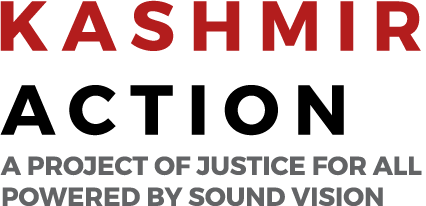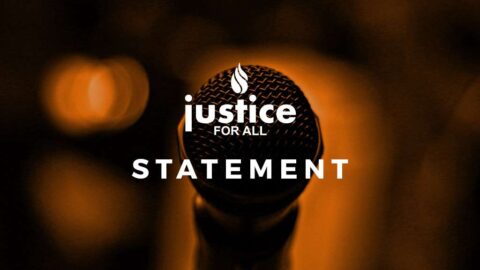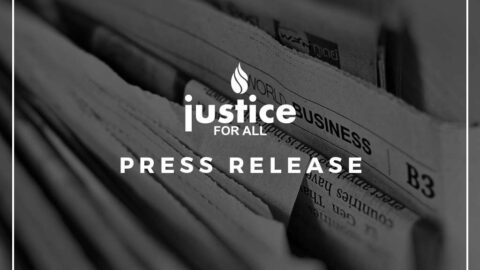Justice For All Statement on Torture and Extrajudicial Killings in Kashmir February 18, 2025 Justice…
Torture In Jammu and Kashmir – A Report
Indian State’s Instrument of Control In Indian Administered Jammu and Kashmir
Executive Summary
Torture: Indian State’s Instrument of Control in Indian administered Jammu and Kashmir is the first report, which focuses on torture, perpetrated systematically and indiscriminately by the Indian State since 1947, and intensified further since the armed struggle for self-determination began in the late 1980s. Torture is the most under- reported human rights violation perpetrated by the State, carried out with complete impunity for the perpetrators, and without a single prosecution ever having taken place.
The Indian State’s response to the armed conflict in Kashmir shows the characteristics of classic counter-insurgency warfare, where military strategies are both ‘population- centric’ and ‘enemy-centric’.1,2,3 The disproportionate presence of Indian armed forces and Police in Jammu and Kashmir (between 650,000 – 750,000)4 is mainly to exercise control over the population. The widespread human rights violations, including use of indiscriminate torture, is a tactic employed to break people’s will. This is reflected in the Indian Army’s Doctrine on Sub-Conventional Operations, which says, “The endeavour should be to bring about a realization that fighting a government is a ‘no win’ situation and that their anti-government stance will only delay the process of restoration of peace and normalcy.”5
After the killing of militant commander Burhan Wani in July 2016, the present period has witnessed unprecedented cycles of State violence. In the last two years, Kashmiris have witnessed gross violations of human rights in the form of extra-judicial executions, injuries, illegal detentions, torture, sexual violence, disappearances, arson and vandalism of civilian properties, restriction on congregational and religious activities, media gags, and ban on communication and internet services.
Unlike other forms of heinous human rights abuses like extra-judicial killings, enforced disappearances or indiscriminate and excessive force exemplified by the use of pellet shotguns, torture is a state crime that often remains hidden even from the media, unless the victim dies as a result of his/her injuries. As many deaths due to torture-related injuries are not immediate but may occur after years or even decades, accurate figures of such fatalities and morbidity are extremely hard to estimate.
This report builds on the body of human rights documentation on torture in Kashmir through an examination of 432 case studies of torture, focussing on the trends and patterns, targets, perpetrators, contexts and impact of torture in Kashmir. Moving between the present and the past what emerges is a vast archive of narratives of forms of torture perpetrated by various arms of the state forces. Through the cases, torture emerges as one of the ways of retaliation by the State against the Kashmiri ‘other’, seen as a challenge to its very legitimacy. But it also emerges as part of routine, intrinsic to the very existence of the Indian State in Kashmir.
12 The UN Istanbul Protocol6 (2004) sets out the many forms of torture and other cruel, inhuman and degrading treatment to which people may be subjected and which cause physical and psychological suffering. Many reports, including this research, show that the vast majority of these have been applied in Jammu and Kashmir. Apart from verbal abuse, the other forms of torture that we have come across during this research include stripping the detainees naked (or down to bare minimum), beatings with wooden sticks, iron rods or leather belts, roller treatment whereby a heavy wooden log or an iron rod is rolled over the legs of the detainee, with extra weight applied to it by forces personnel who sit on the opposite sides of this rod, water-boarding, electrocution, hanging from the ceiling, dunking detainees’ head in water (which is sometimes mixed with chilli powder), burning of the body with iron rods, heaters or cigarette butts, solitary confinement, sleep deprivation, sexualized torture including rape and sodomy, among others. The following figure lists the number of times these and other methods came to be used in the 432 cases studied for this report.
Number of Victims
Figure: Number of people subjected to different forms of torture or other cruel, inhuman or degrading treatment
Out of the 432 victims, 222 (51.4%) suffered some form of health complications after being tortured. Out of these 222, 209 (94.1%) people suffered health issues with long- term ramifications, and among them, 49 (23.4%) suffered acute ailments e.g. cardiac problems, nephrological issues, complete or partial loss of eyesight or hearing ability, amputations, sexual impotency, etc. and many of these people have been on regular (or irregular) medication ever since they were tortured. Documented studies of the early 1990s have previously noted that torture has resulted in people developing Rhabdomylosis and consequent acute renal failure.7,8
Survivors of torture have battled with psychological issues long after their physical wounds were healed. Of the 432 victims, 44 suffered from some form of psychological difficulty after being subjected to torture. According to an extensive study published by Medecins Sans Frontieres in 2015, 19% of Kashmiri population suffers from Post- Traumatic Stress Disorder.
In Kashmir torture has been used by Indian armed forces and police without any distinction of political affiliation, gender or age. An inordinate 301 out of 432 torture victims were civilians, 119 were militants, 5 ex-militants (essentially civilians at the time of being tortured) and 2 from the Jammu & Kashmir Police. (Affiliations were unverified in 5 cases). The civilians include political activists, human rights activists, journalists and students. Of the 432, 27 were minors when tortured. Professionals like doctors, paramedics and journalists have also been regularly targeted and assaulted since the early 1990s.
A lack of faith in institutions prevents victims from seeking justice or redressal for the torture. Of the 432 cases studied, only 27 had gone to the State Human Rights Commission (SHRC). 20 of these complainants obtained recommendations in their favour. It is pertinent to mention here that in 2017, the Jammu and Kashmir government turned down almost 75% of the recommendations made by the SHRC, accepting only 7 of the 44 compensation and ex-gratia relief recommendations made by it9. Even in the recommendations of SHRC, which government implements, only the monetary relief part of the recommendation is accepted, while as there is no instance available where on SHRC recommendations punitive action was taken against the culpable officials. The Jammu and Kashmir government informed the State Legislative Assembly in 2018 that out of the 229 recommendations made by the panel since 2009, only 58 were accepted by the government10.
The use of torture in Kashmir can be traced back to a longer history of authoritarian state practices and the repression of political struggle opposing Indian control in the region, and this precedes the onset of armed insurgency in the late 1980s. Apart from the humiliating practices of collective ill-treatment, more ‘orthodox’ torture techniques such as blind-folding, beatings, stress positions, burning with clothing iron and stuffing hot potatoes into the mouth were routinely used as a mode of ‘interrogation’ and coercing ‘confessions’ about anti-India, ‘Pro-Pakistan’ and other anti-establishment political activities, as well as punishing political dissent from the earliest days of the Emergency Administration in Kashmir since 1947.
The massive fraud and rigging of elections in 1987 is widely seen by commentators as the proximate cause that led several prominent political figures to take up arms against Indian control over Jammu and Kashmir. Decades of repression of all forms of democratic opposition to Kashmir’s accession to India, such as constitutional negotiations, peaceful mass protests and electoral politics had preceded the armed rebellion.
In September 1990, the Armed Forces (Jammu and Kashmir) Special Powers Ordinance was legalised as the Armed Forces (Jammu and Kashmir) Special Powers Act, 1990 (AFSPA), which gave the Indian armed forces sweeping powers of arrest of civilians, and even to use lethal force on ‘unlawful assemblies’ on law and order grounds. Human rights groups have stated that while in 1990, 36,000 armed forces including regular army personnel and police were deployed to counter the estimated 300 active militants, by 1991 their numbers had risen to 200,000 while the number of militant groups had also proliferated and militant numbers were estimated to be in thousands.11,12 By May 1990, a new specialised counter-insurgency force, called the Rashtriya Rifles, with troops drawn from existing Army Regiments was created specifically to deal with the insurgency in Kashmir.13
The Cordon and Search Operations (CASOs) had, by 1990, been established as a widely dreaded and commonplace event where a large number of atrocities, ranging from mass sexual violence and torture, and illegal arrests leading to eventual disappearances, or custodial and extra-judicial killings took place. In 1991, a human rights fact-finding delegation from India, comprising of different groups like Andhra Pradesh Civil Liberties Committee (APCLC), Committee for Protection of Democratic Rights (CPDR), Lok Shahi Hakk Sanghatana (LHS), Organisation for Protection of Democratic Rights (OPDR), noted that “most of the people who are tortured and killed in custody are young men picked up by the army or paramilitary forces during “crackdown” operations in villages or other areas to identify suspected militants.”14
The mid-1990s also saw the emergence of State controlled ‘pro-government militants’, colloquially referred to as naabid or Ikhwan, consisting of armed groups which had begun operating as clandestine counter-insurgents on behalf of the Indian army. They operated with absolute impunity, openly engaging in criminal acts and terrorising neighbourhoods. The year 1994 saw the establishment of the Special Task Force (STF, later re-named ‘Special Operations Group’) as a specialist ‘elite’ and ‘frontline’ counter- insurgency wing of the police. The STF soon became notorious for its ‘excesses’ including routine use of torture and reprisals.
Human Rights Watch (1993) and Amnesty International (1995) have drawn a direct correlation between the extremely high custodial death and extra-judicial killing figures in Kashmir, with the widespread phenomenon of illegal, arbitrary and incommunicado detentions, coupled with the pervasiveness of brutal torture methods in custody. Amnesty International stated that the severity of torture meted out by the Indian armed forces in Jammu and Kashmir was the main reason for the number of deaths in custody.15 These deaths, and permanent disabilities such as amputations, were not caused only as a result of the direct effects of the physical abuse, but also due to the lack of medical access, and the inhuman and unhygienic conditions of illegal detention in dark, overcrowded cells where chances of untreated wounds becoming infected and gangrenous was extremely high.
While Joint Interrogation Centres (JICs) were constructed primarily to execute torture in and around Kashmir valley, the gruesome practice wasn’t limited to these centres. Police stations, military camps, SOG camps and even abandoned buildings were also used for this purpose. During CASOs, the government buildings in a particular area, like schools, Primary Health Centres, Rural Development Offices etc., and sometimes even the houses of local people, would be turned into makeshift torture centres. Certain camps were also designated for torture – like the notorious PAPA-2 and Hari Niwas, where many youth are believed to have been tortured to death in the 1990s. In the 432 testimonies, at least 144 Indian armed forces camps (Army and paramilitary), 52 Police Station/Posts, 19 SOG camps, 15 JICs and 9 Ikhwan camps were identified where torture has been perpetrated on detainees.
The 1996 Jammu and Kashmir Assembly elections, after which the National Conference came to power, saw widespread coercion by Ikhwanis and Indian armed forces to make people vote. The Peoples Democratic Party (PDP) came to power in 2002 on a platform that promised the disbanding of the notoriously brutal and corrupt SOG, demilitarisation and removal of bunkers, and beautification of city areas, called the ‘Healing Touch’ policy. However, instead of disbanding SOG, it was merged with the Jammu & Kashmir Police and led to the entire Police department getting involved in counter-insurgency operations. As a consequence the Jammu & Kashmir Police has also become highly militarized.
The seeming decline in political violence after 2002, and the government’s claim of ‘return to normalcy’ was belied by the 2008 mass uprising in Kashmir. The uprising saw the emergence of the young ‘stone pelter’ as a criminalised classification subjected to repeated cycles of illegal and unrecorded arrests on the basis of suspicion and profiling, prolonged detentions, torture, inhuman treatment, release, and then re-arrest at the slightest indication of political unrest.
Although India is a signatory to the United Nations Convention against Torture (UNCAT) since 1997, it has not ratified the treaty till date. In all the three UPRs conducted by the UNHRC in 2008, 2012 and 2017, it was recommended that India ratify the Convention. In 2010, Prevention of Torture Bill was introduced in the Indian Parliament but was not passed and it lapsed in 2014. In 2017 the 273rd report of the Law Commission of India recommended to the Government of India that it ratify the Convention, and also introduced the new Prevention of Torture Bill. This Bill states, “The State should own the responsibilities for the injuries caused by its agents on citizens, and principle of sovereign immunity cannot override the rights assured by the Constitution.” However, the Indian State has continued to evade its responsibilities and refuses to acknowledge the role of its forces, and by extension its own role, in perpetrating torture in Kashmir.
In the absence of any law criminalizing torture and the absolute impunity that the Indian armed forces enjoy in Kashmir, torture continues unabated. Since currently the main targets of torture are the young boys labelled as “stone pelters”, many of them see their future prospects as bleak. They are often caught in a whirlpool of illegal or arbitrary detentions, torture and continuous harassments, which makes some of them lose all hope. In bringing out this report documenting the cases of torture our attempt forms a part of our larger campaign against varied forms of human rights violations perpetrated with impunity in the state of Jammu and Kashmir, and as a challenge to state-imposed erasure of history and memory.
1Indian Army. Doctrine on Sub-Conventional Operations. 2006. Simla: Headquarters, Army Training Command. http://indianstrategicknowledgeonline.com/web/doctrine%20sub%20conv%20w.pdf 2Van Wagenen M J. An Analysis of the Indian Government’s Counterinsurgency Campaign in Jammu and Kashmir. 2004. (Thesis submitted to Army Command and General Staff College, Fort Leavenworth, Kansas) https://apps.dtic.mil/dtic/tr/fulltext/u2/a428962.pdf 3Hodermarsky D G. Lessons from India’s Counterinsurgency Campaign in Jammu and Kashmir.2013. (Monograph submitted to Army Command and General Staff College, Fort Leavenworth, Kansas) https://apps.dtic.mil/dtic/tr/fulltext/u2/a606326.pdf 4 JKCCS. Structures of Violence. 2015; Page 14. https://jkccs.files.wordpress.com/2017/05/structures-of-violence-e28093-main-report.pdf
5Indian Army. Doctrine on Sub-Conventional Operations. 2006. Simla:Headquarters, Army Training Command.
6Office of the United Nations High Commissioner for Human Rights. Istanbul Protocol: Manual on the Effective Investigation and Documentation of Torture and Other Cruel, Inhuman or Degrading Treatment or Punishment. 2004. https://www.ohchr.org/Documents/Publications/training8Rev1en.pdf
7 Malik G H et. al. Acute renal failure following physical torture. Nephron. 1993;63 (4):434-7 https://www.ncbi.nlm.nih.gov/pubmed/8459879 8 Malik G H et. al. Further observations on acute renal failure following physical torture. Nephrol Dial Transplant. 1995;10 (2):198-202. https://www.ncbi.nlm.nih.gov/pubmed/7753452 9Bhat R. Govt turned down 75% of recommendations of SHRC in 2017. Rising Kashmir. 2017 December. http://www.risingkashmir.com/news/govt-turned-down-75-of-recommendations-of-shrc-in-2017 10Maqbool U. Now, SHRC can’t entertain complaints older than a year. Greater Kashmir. 2018 December. https://www.greaterkashmir.com/news/front-page/now-shrc-can-t-entertain-complaints-older-than-a-year/304701.html
Physicians for Human Rights & Asia Watch (A division of Human Rights Watch). The Crackdown In Kashmir: Torture of Detainees and Assaults on the Medical Community. 1993; Page 12. https://www.hrw.org/sites/default/files/reports/INDIA932.PDF 12Andhra Pradesh Civil Liberties Committee (APCLC), Committee for Protection of Democratic Rights (CPDR), Lok Shahi Hakk Sanghatana (LHS), Organisation for Protection of Democratic Rights (OPDR). Undeclared War on Kashmir. 1991; Page 10. 13People’s Union for Civil Liberties (PUCL), Citizens for Democracy, Radical Humanist Association, Manav Ekta Abhiyan. Report on the Kashmir Situation. 1990. 14Andhra Pradesh Civil Liberties Committee (APCLC), Committee for Protection of Democratic Rights (CPDR), Lok Shahi HakkSanghatana (LHS), Organisation for Protection of Democratic Rights (OPDR).Undeclared War on Kashmir. 1991; Page 14-16.
15Amnesty International.India: Torture and Deaths in Custody in Jammu and Kashmir. 1995; Page 2. https://www.amnesty.org/download/Documents/176000/asa200011995en.pdf
Torture: Indian State’s Instrument of Control in Indian administered Jammu and Kashmir is the first report, which focuses on torture, perpetrated systematically and indiscriminately by the Indian State since 1947, and intensified further since the armed struggle for self-determination began in the late 1980s.
Final-USA-TORTURE-Indian-State’s-Instrument-of-Control-in-Indian-administered-Jammu-and-KashmirDownload
Final-USA-TORTURE-Indian-State’s-Instrument-of-Control-in-Indian-administered-Jammu-and-KashmirDownload




